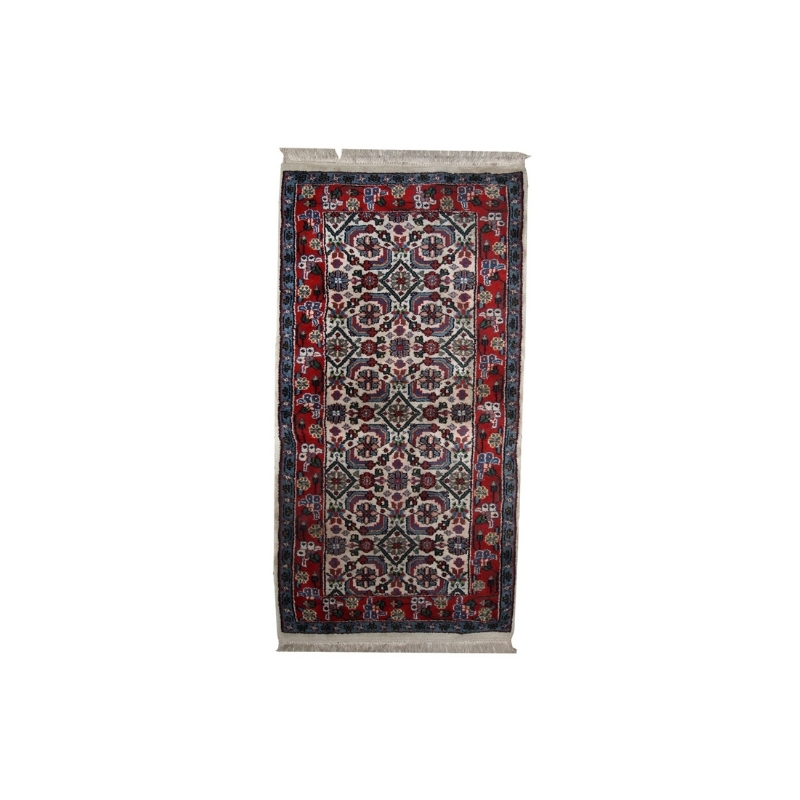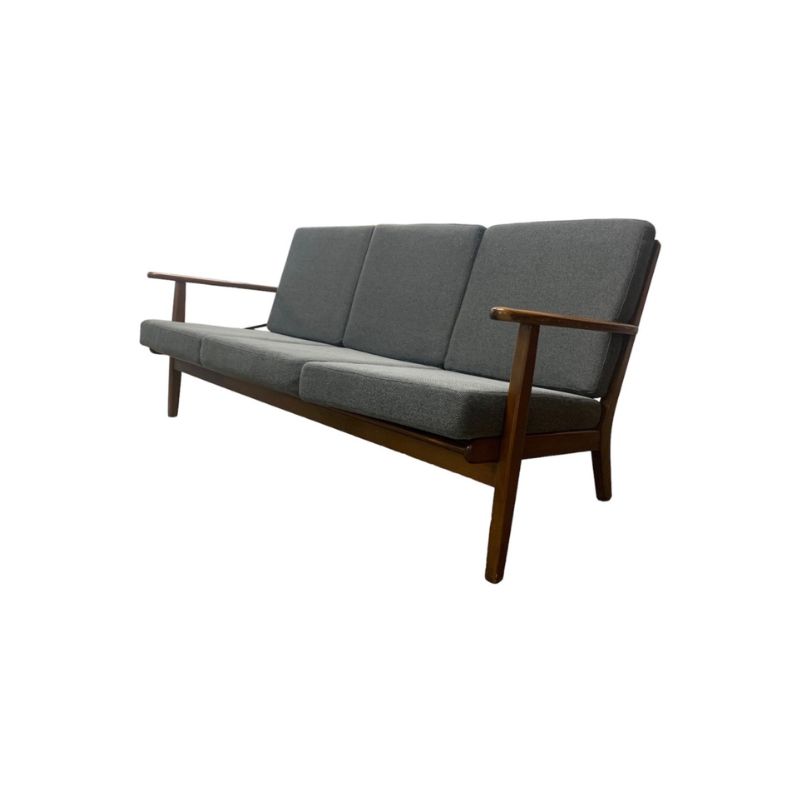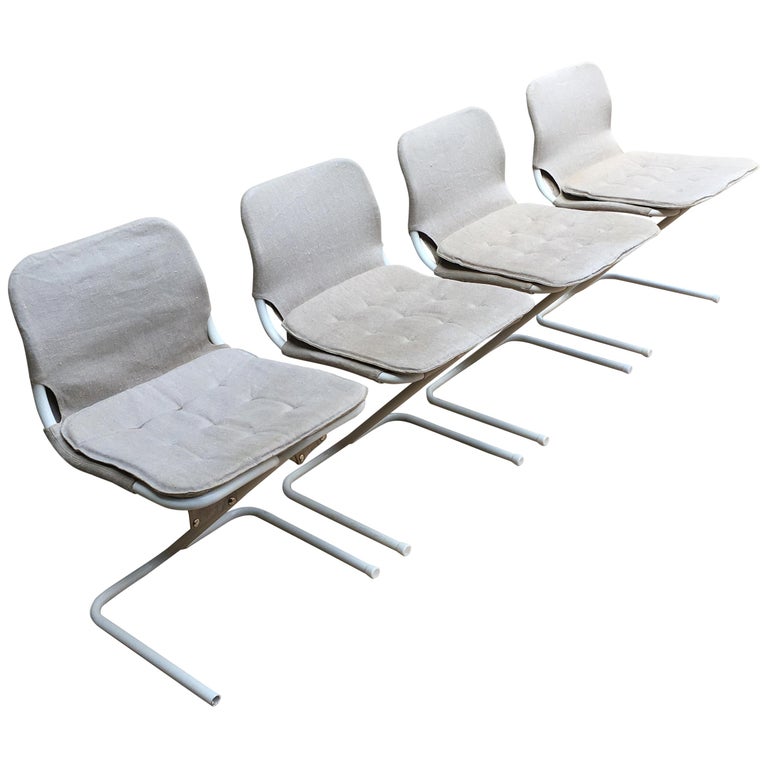Some pictures might allow a more informed solution. It'll make the difference between definitive advice and conditional advice.
If they're already dark, there's a chance they're fairly dirty - cleaning them with fine steel wood and a Danish oil might actually make them lighter as your scrub off grime. Alternatively but a more effective and long winded version of this, is to use hot soapy water (I actually imported Murphy's Oil Soap, because of advice on here and I will be doing that for the foreseeable future) to clean first and see how they turn out.
However, if they're just a dark teak (or afromorsia) there's not much you can do to remain a purist AND get the colour you want. Maintaining the colour, I've read that water based poly's are good at leaving wood colour as unaltered as possible. But I can't say I've experimented.
It also depends on the texture of finish you'd like anyway. I'm personally not adverse to my chairs being left in a fairly unfinished state. Teak looks nice natural to me!
Happy to post pictures. Here's a picture of one of the chairs next to a newer D-Scan chair that has a brighter orange color teak, which is to be expected since it's younger newer stuff, for comparison.
As you can see, the Buck chairs are almost a medium brown color. So I just don't want them to get much darker. You can also see they have a lot of stains and water discoloration, so some serious cleaning and light sanding will be needed before I get to the oil.
Happy to post pictures. Here's a picture of one of the chairs next to a newer D-Scan chair that has a brighter orange color teak, which is to be expected since it's younger newer stuff, for comparison.
As you can see, the Buck chairs are almost a medium brown color. So I just don't want them to get much darker. You can also see they have a lot of stains and water discoloration, so some serious cleaning and light sanding will be needed before I get to the oil.
Aha!
Yep, Murphy's Oil Soap and a scouring pad - clean it up, and then 0000 steel wool and Danish oil, and it'll come out much warmer and cleaner. I don't THINK you need to worry about it going darker. I think the dull/dark element there is the finish. It almost looks as if it's had some solvents spilled on it.
I personally don't think that any oil will add too much color to them since most of what you have already comes from the finish anyway as Kyle pointed out. But thats just me. Why don't you give the chairs a light sanding?
"People buy a chair, and they don't really care who designed it." (Arne Jacobsen)
In my experience, here are some oils that I have used and their tendency to darken teak, from least likely to most:
Watco Danish oil
Boiled Linseed oil
100% Tung oil (really depends on brand)
Starbright teak oil
Watco Teak Oil
Watco Medium Walnut
Watco Black Walnut
Watco Dark Walnut
The difference between each is pretty minimal, and one could be exchanged for the one next to it pretty easily. A lot will also depend on the actual characteristics of the wood. I really think you are probably making a mountain out of a mole hill here. An extremely skilled finisher can match just about any color with any wood, but when considering what a mere mortal can hope to accomplish, the majority of the final color/tone will depend on the wood itself.
There is solid advice above, clean well, very lightly sand, use Watco Danish oil. If you are a purist, then go with Starbright. I think it is pretty unlikely that you will be able to affect the final color much with your oil choice.
That chair doesn't look particularly dark to me, but it does look very dull.
I've restored a lot of teak chairs in this condition or worse. I used to use Murphy's Oil Soap on them because it cut through grime very quickly, but it dried the wood out a lot and I'd have to do several coats of oil to restore the luster. Also, the soap has to be rinsed off completely or it can cloud the oil finish (though I think when this happened I was using a teak oil with added varnish).
Now I just do straight Star-Brite teak oil with #0000 steel wool. It loosens the grime plus it breaks down old oil, which also dulls the color of the wood. Wipe it off with rags or paper towels, let it dry for half an hour and buff once more and you're done.
Those water spots will disappear with this treatment or will be so faint that you will have a hard time finding them later.
The only thing that won't come off with this method is hardened sugary residue--or at least I think it's sugar-based. It has a very dark reddish brown color, almost black, and looks like a drip of something or other--I think maybe wine and/or juice? I once redid a bar cart that had a lot of these spatters, and also one particularly filthy set of teak chairs. No amount of oil and steel wool would remove it, then I figured out that all that was needed was a damp rag to dissolve the crud---and only the slightest bit damp, at that.
I do not recommend polyurethane ever on teak and I don't know anyone else who does, either.
Here are some before and after photos of chairs i've restored with just oil and steel wool. The 2nd and 3rd are not the same chair but are from the same set (got them mixed up because of the similar grain pattern on each). I thought the one with severe water staining was a goner for sure but all it needed was oil---no sanding, just oil. I think the only times I've ever sanded teak was to smooth out teeth marks from puppies.
Why do you want the chairs to be a certain color? Are you trying to match them to the D-Scans so you can use them as a set? Or do you need them to match a table? I'm just curious.
This whole 'which oil is best' topic has been done to death and then some on this forum.
Unless you're after some special effect, it's best to stay away from pigmented products altogether. Otherwise, the key ingredient in almost all commonly available "Danish" oil finishes is linseed oil and they are basically similar formulas and produce similar results.
My experience indicates that proper application and freshness of product are more important factors than specific brands.
Thanks for all the input everyone.
@Spanky - The back of that chair - Moller? - looks amazing. That was just your usual process of star brite and steel wool?
The reason I don't want to darken my chairs is because the dining table I'm pairing them with is newer/younger teak that is a bright color. So I'd prefer not to make the older, darker teak chairs any darker than they already are.
If you need any help, please contact us at – info@designaddict.com









